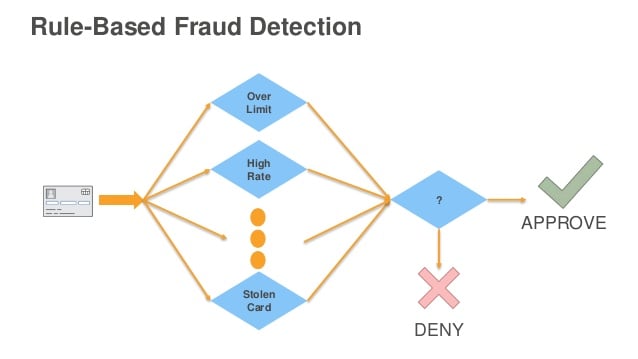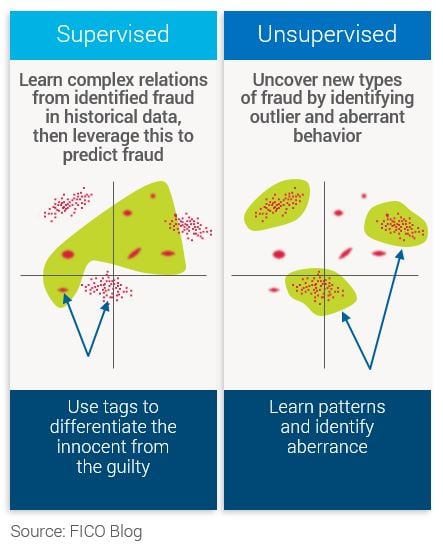Fraud detection algorithms in action
Fraud Detection in Python

Charlotte Werger
Data Scientist
Traditional fraud detection with rules based systems

Drawbacks of using rules based systems
Rules based systems have their limitations:
- Fixed thresholds per rule to determine fraud
- Limited to yes/no outcomes
- Fail to capture interaction between features
Why use machine learning for fraud detection?
- Machine learning models adapt to the data, and thus can change over time
- Uses all the data combined rather than a threshold per feature
- Can give a score, rather than a yes/no
- Will typically have a better performance and can be combined with rules

Refresher on machine learning models
from sklearn.linear_model import LinearRegression from sklearn.model_selection import train_test_split from sklearn import metrics# Step 1: split your features and labels into train and test data X_train, X_test, y_train, y_test = train_test_split(X, y, test_size=0.2)# Step 2: Define which model you want to use model = LinearRegression()# Step 3: Fit the model to your training data model.fit(X_train, y_train)# Step 4: Obtain model predictions from your test data y_predicted = model.predict(X_test)# Step 5: Compare y_test to predictions and obtain performance metrics print (metrics.r2_score(y_test, y_predicted))
0.821206237313
What you'll be doing in the upcoming chapters
Chapter 2. Supervised learning: train a model using existing fraud labels
Chapter 3. Unsupervised learning: use your data to determine what is 'suspicious' behavior without labels
Chapter 4. Fraud detection using text data: Learn how to augment your fraud detection models with text mining and topic modeling

Let's practice!
Fraud Detection in Python

